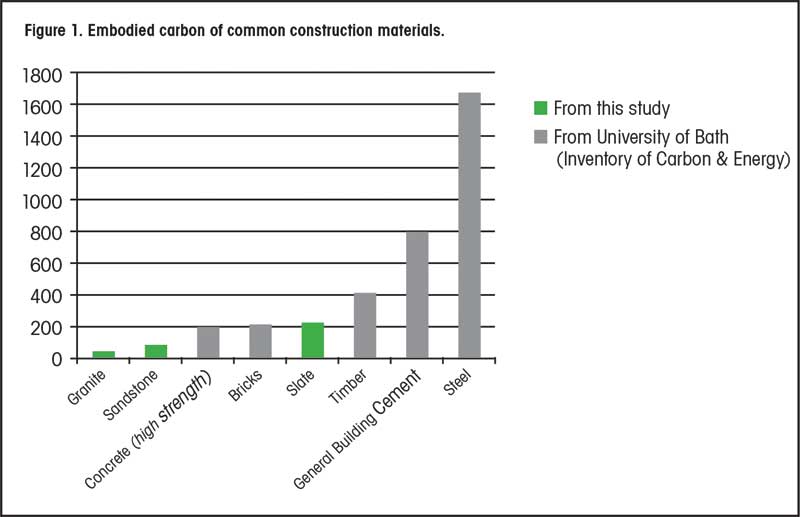Carving viability for natural stone in Canada

Image © Centre for Clean Products
Case studies
Comparatively speaking, the Canadian market has far fewer stone projects than the United States due to reasons such as quarry locations, proximity, and transportation methods. This being said, some magnificent projects have been completed in the country as of late.
Aga Khan Museum and Ismaili Centre
Toronto’s Aga Khan Museum and Ismaili Centre comprise almost 9290 m2 (100,000 sf) of exterior stone, including cladding and architectural stone elements. Spread across a campus-like environment of 7 ha (17 acres), these elements are not only a feast for the eyes, but also a good example of what a stone consultant can bring to a project.
During the design phase of this project, stone selection was critical. Over 15 months, numerous tests were performed to determine what stone properties were appropriate for the various applications. A careful balance between esthetics and practicality was important. Factors such as climate, pollution from a local highway, quarry options, and potential fabricators were also considered before final decisions. The museum’s design features were executed with the help of detailed shop drawings, as well as precise engineering and anchor system design. Thus, services provided by the stone consultant were vital to this project’s success.
Canadian Museum of Human Rights
The Canadian Museum of Human Rights (CMHR) in Winnipeg is another example of a stone project requiring specific stone expertise. (For more on this project, see the article, “Canadian Museum for Human Rights: Design Excellence and Structural Innovation at the Forks,” by Neb Erakovic, Crispin Howes, and Terry Dawson in the May 2014 issue of Construction Canada. Visit www.constructioncanada.net/canadian-museum-for-human-rights-design-excellence-and-structural-innovation-at-the-forks.) Construction manager PCL and architect Antoine Predock both realized consulting a stone expert was imperative early in the project’s development, as stone was one of the key elements in the architectural design from both an exterior and interior perspective.

Image © Stone Federation Great Britain
The project included a design-assist package clearly outlining the experience and other requirements needed to assist the team of stakeholders. The consultant’s engagement involved investigation of several stone options and visits to the quarry to facilitate understanding of material properties, fabrication capabilities, and limitations. Regular collaboration, including the creation of several mockups, began during the construction document phase to ensure the design intent was being met.
As the project evolved, development of shop drawings and co-ordination with other key stakeholders and contractors—including building maintenance staff—was enacted by the stone consultant. Ultimately, this project’s exemplification of innovative stone design is thanks to the team of stone consultants that influenced and supported key decisions. Predock refers to this project as his favourite, which is quite the statement from an American Institute of Architecture (AIA) Gold Medal award-winner.
Montréal Museum of Fine Arts
Another example of effective collaboration between architect and stone consultant can be seen in the Montréal Museum of Fine Arts. The underlying challenge was modernizing stone from connecting century-old buildings. The result was an eye-catching modern façade mimicking the quarry walls from which the stone was extracted. Effective execution of this goal started with the selection of a stone consultant, whose engagement during the design phase helped facilitate the architect’s vision. This accomplishment would not have occurred without the use of clear and effective shop drawings, a numbering system, and tracking of quarried blocks and slabs.
Conclusion
In all three of the aforementioned projects, project teams and their stakeholders benefitted from the engagement of an experienced stone consultant utilizing advanced technology such as building information modelling (BIM) to streamline the design and construction process. Complex geometric calculations and challenges were met with confidence, and stone applications successfully pushed to the limit in the design stage. However, no amount of technology can substitute expert knowledge of various stone properties and all they entail.
Elaborate claddings are not the only stone assemblies that justify engaging a qualified consultant. It is always best to check with a stone expert when designing with this material, regardless of the project size and scope. Despite stone’s reputation as a difficult building material with a high-maintenance installation process, it is a valuable, easy-to-use resource capable of saving building professionals money and time.
When stone is utilized appropriately and efficiently, the performance it offers and statement it makes are undeniable.
Michael Salerno is responsible for sales, marketing, and business development activities at PICCO Engineering, and is also part of their senior management team. He holds a degree from the University of Toronto, and is heavily involved in the Building Industry Land Development Association (BILD) on behalf of PICCO. Salerno can be reached at msalerno@picco-engineering.com.







